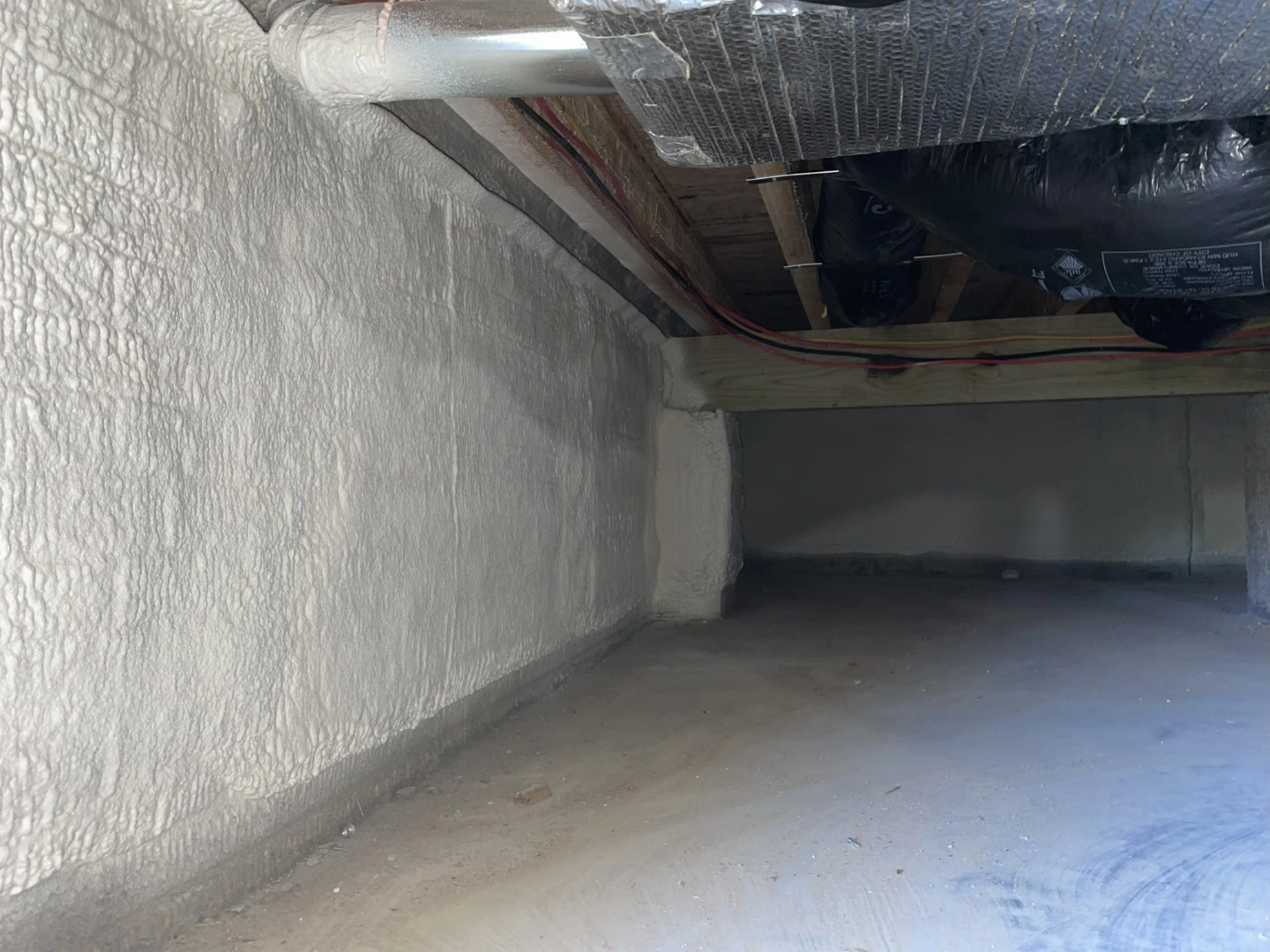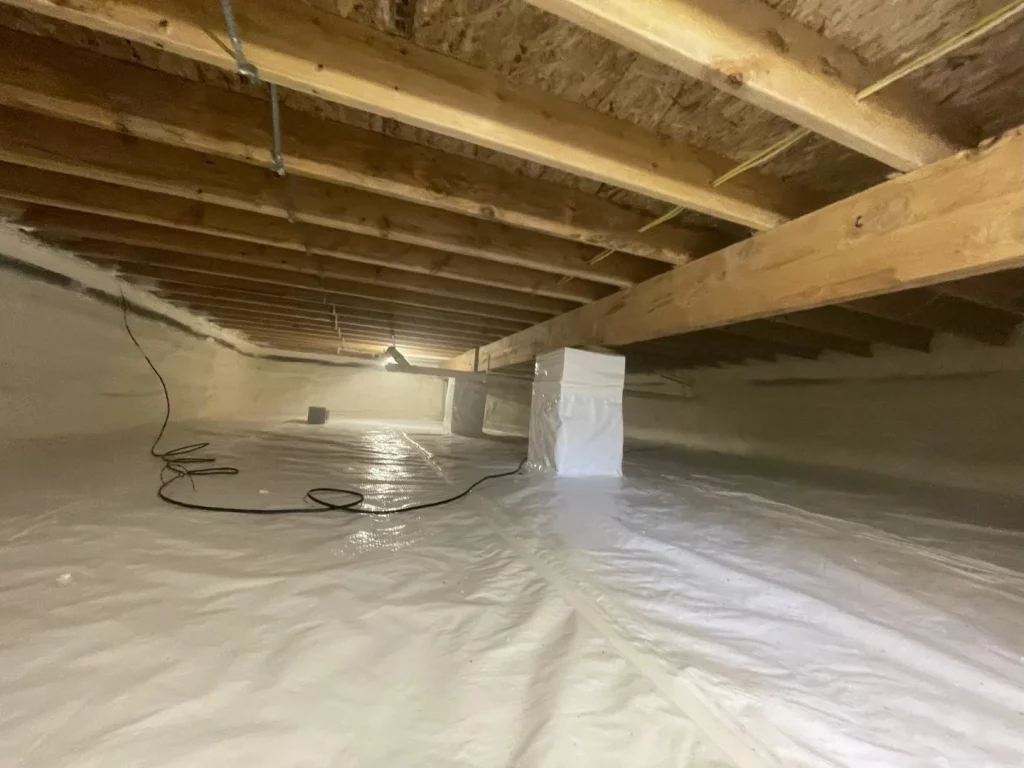
Yes, crawl space encapsulation is a highly effective method for preventing fungal growth in homes throughout Chester, Maryland. The process works by isolating the crawl space from the two primary sources of moisture that fungi need to thrive: ground moisture and humid outside air. By installing a heavy-duty vapor barrier across the floor and walls and sealing off vents, encapsulation creates a controlled environment where humidity levels can be actively managed, making the space inhospitable to mold and mildew.
This comprehensive guide explains the direct link between crawl space conditions and fungal growth, details the encapsulation process, and outlines key considerations for homeowners in the Chester area. The information here is based on extensive field experience in addressing moisture-related issues specific to Maryland’s Eastern Shore climate.
The fundamental cause of fungal growth in any part of a home is excess moisture. In Chester, the humid subtropical climate presents a persistent challenge. Crawl spaces, by their nature, are susceptible to moisture intrusion. Dirt floors constantly release water vapor from the soil, and traditional foundation vents allow warm, moist summer air to enter the cooler space. When this humid air cools, its relative humidity rises, often leading to condensation on joists, insulation, and pipes.
This combination of damp surfaces and organic materials like wood and paper-faced insulation creates the perfect breeding ground for fungus. According to the U.S. Environmental Protection Agency, controlling moisture is the key to managing mold in homes. Fungal spores are always present in the air; they only become a problem when they find a source of water. An unconditioned crawl space provides that source consistently.
Beyond the structural risk to a home’s wooden framework, this fungal growth can seriously affect indoor air quality. A significant portion of the air on a home’s first floor originates from the crawl space due to the “stack effect,” where air naturally rises. This means fungal spores and musty odors can easily migrate into the living areas, potentially causing health issues.
Crawl space encapsulation is a systematic approach to moisture control. It’s not just about laying down a plastic sheet; it’s about creating a completely sealed and conditioned building envelope.
Bonus Tip: Ensure the vapor barrier used is at least 12-mil thick and is puncture-resistant. Thinner, less durable materials can be easily damaged by foot traffic during future maintenance, compromising the entire system.
Choosing the right material for the vapor barrier is essential for a long-lasting and effective system. The thickness and composition of the liner determine its durability and performance.
| Material Feature | 6-mil Polyethylene | 12-mil Reinforced Polyethylene | 20-mil Reinforced Polyethylene |
|---|---|---|---|
| Typical Use | Basic vapor retarder, minimum code | Standard encapsulation | Heavy-duty or high-traffic areas |
| Puncture Resistance | Low | Good | Excellent |
| Expected Lifespan | 5-10 years | 15-20+ years | 20+ years |
| Best For | Smooth, low-traffic crawl spaces | Most residential applications | Rocky terrain, storage use |
Before committing to encapsulation, homeowners should evaluate a few key factors to ensure it’s the right solution for their specific situation.
Bonus Tip: Ask for details about how the vapor barrier will be attached to the foundation walls. It should be mechanically fastened, not just taped, to prevent it from detaching over time as the concrete or block walls effloresce.

For homeowners in Chester, MD, controlling crawl space moisture is not a recommendation; it is a necessity for protecting the health of the home and its occupants. Crawl space encapsulation offers a permanent and reliable solution to prevent fungal growth by eliminating the moisture on which it depends. By sealing out ground vapor and humid air, you create a clean, dry, and healthy space beneath your home. Before proceeding, homeowners should always start with a thorough inspection to address any bulk water issues and ensure the solution is tailored to their property’s specific needs.
Evaluating the unique conditions of a crawl space requires expertise. For a detailed inspection and to discuss moisture control solutions, contact Peninsula Insulation, LLC. Get in touch with a specialist by calling (410) 770-2624 or by sending an email to wil@mdsprayfoam.net to determine the most effective approach for your home.
The ideal relative humidity for an encapsulated crawl space should be maintained between 30% and 50%. This range is dry enough to prevent any possibility of fungal growth while also protecting the wooden structure from becoming overly dry and brittle.
A professionally installed system using high-quality materials can last for 20 years or more. The lifespan depends heavily on the durability of the vapor barrier and the quality of the dehumidification system. Regular annual maintenance checks are recommended to ensure everything remains in working order.
Absolutely. By preventing fungal growth and stopping damp, musty air from rising into your living space, encapsulation directly improves indoor air quality. Many homeowners report a noticeable reduction in musty odors and allergy-like symptoms after the project is complete.
While it may not be a cosmetic upgrade, a properly encapsulated crawl space is a significant asset. It demonstrates to potential buyers that the home has been well-maintained and is protected from moisture, fungus, and structural damage. This can be a strong selling point, especially in a region prone to humidity issues.
The primary maintenance task is for the dehumidifier. The filter should be checked and cleaned or replaced every few months, and the unit should be inspected annually by a professional to ensure it is functioning correctly. It’s also a good idea to visually inspect the vapor barrier once a year for any tears or detached seams.
The foundation vents are sealed off from the inside as part of the encapsulation process. Decades ago, building science suggested that venting a crawl space would help it dry out. However, extensive research from organizations like Advanced Energy has shown that in humid climates like Maryland’s, vents do more harm than good by introducing moisture-laden air.